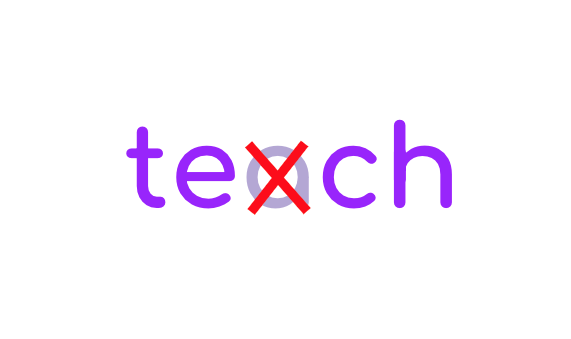My Learning Plan
 Faraja Thompson
Faraja Thompson
Following a circuit approach.
Throughout my journey, I have been introduced, by various teachers, mentors, and content creators, to excellent learning resources and approaches to studying. I now have a custom curriculum in place that I feel will give me a solid foundation in my coding education. The problem at first was figuring out a workable plan for following my curriculum. Should I complete one course at a time? Should I skip some topics to return to later? How much time should I plan to devote to daily studying, and how much of that time should I allocate to each course?
These were among the difficult questions that I faced. Until I came up with answers to these questions, my learning plan was destined to fail. In today’s blog post, I discuss how I succeeded in creating a workable learning plan by implementing what I call a circuit approach to studying. This approach has helped to motivate me to do my work and to stay focused during work time; it has helped me to accomplish much more than ever before, and it has helped me to feel comfortable taking the necessary breaks to maintain a healthy work/life balance.
Learning goals
I started out my journey by learning the basics of HTML, CSS, and Javascript through a Coursera specialization. I then solidified the basics by building a couple of projects and by participating in some Girl Develop It (GDI) cohorts, as both a teaching assistant and a student. Next, on the advice of an influencer, I purchased a Udemy course, The App Brewery Bootcamp. Recognizing an important gap in my learning, I tacked on an additional Udemy course, Data Structures and Algorithms, and began juggling the two courses along with personal projects and GDI courses and events. My son then recommended The Odin Project. Meanwhile, another influencer introduced me to M.I.T.’s The Missing Semester. Here is the point when it became difficult to manage my schedule.
The Odin Project and The Missing Semester looked extremely good, and I wanted to start both courses immediately, yet I was only about one-fourth of the way through the App Brewery Bootcamp and just at the beginning of the DS& A course. I found both to be very valuable, so I was not willing to drop either. There simply were not enough hours in the day to devote to each of the courses of interest. The advice I received was a mixed bag. One philosophy was that taking more than one course on the same topic can be confusing, repetitive, and therefore, a waste of time. Another perspective was that I should dabble in each of these courses.
Ultimately, I had to do some serious soul searching to discover what I truly wanted and what was within the range of my capabilities. I decided that I would take all of the courses simultaneously, and that I would call upon a tried and true system to ensure the success of my plan.
My learning circuit
I described in a previous blog post how I invented a system to ensure that none of my students would ever miss a small-group session due to a holiday, field trip, assembly, etc. Rather than following the traditional Monday - Friday schedule, my small groups followed a Day 1 - Day 6 schedule. My system allowed me to meet with the next scheduled group on the next available day. In early June, I recognized how this circuit approach could make it possible for me to take as many courses as I would like simultaneously (just last week I decided to add the Harvard CS50 course to my circuit).
The way it works is that each of my courses is a module with a specific amount of time scheduled, from a half-hour to three hours. Personal projects and coding challenges are additional modules. I must complete the full time allotted to a current module before moving on to the next. The time spent must be fully focused. If I take a break, for whatever reason, the time pauses until I get back to work. I am not allowed to shorten the scheduled time, but I can lengthen it as needed or desired.
For example, let’s say that I complete one hour of the App Brewery module, which is three hours long, and I decide to take a break, or I have a meeting scheduled for the rest of the work day. Then the next day, or the next time that I get back to my curriculum, I would start working on the second hour of the App Brewery. And let’s say that I complete the full three hours, but I am fascinated by the content and wish to continue learning. I would keep track of the additional time spent, and continue with the App Brewery module for as long as I would like before moving on to the next module.
Wrapping the circuit around activities
Fantastic news--I was accepted to the Recurse Center (RC) this summer! RC is a community-based educational retreat for programmers to dramatically improve their skills. In my next blog post, I will write about my experience in depth. RC provides me with the perfect environment to focus on my goals. I also participate in pair programming, special interest groups, checkin/reflection meetings, and presentations. I can easily wrap my learning circuit around these activities.
For example, one day last week, I had a pair programming session scheduled for 3pm. I started working on a half-hour module at 2:20. I would have needed to continue until 2:50 in order to complete the module, but I wanted to have enough time to prepare for my appointment, so I stopped at 2:40. I completed the remaining ten minutes of the module at 7:50pm that evening, when I felt ready. I even felt up to doing an extra 15 or 20 minutes of work. I logged the additional time that I put in along with the scheduled module time. Since implementing my schedule, during my best week, I completed two eight-hour circuits. That was when I was working on my curriculum part time. Hopefully, now that I am working on it full-time for the summer, I can achieve more.
Currently, I allocate the most time on my circuit to the App Brewery Bootcamp course. This may change if I shift priorities. I also must revise my circuit upon completing courses, or in the event that I decide to add or drop courses. A rough estimate tells me that I have well over 200 hours budgeted this summer for focused study. That is enough time to reach, and possibly exceed, my learning goals!
A google docs sticky note
Here is a template of my study circuit schedule. I designed the first page of the Google Doc to resemble a sticky note. I selected a color scheme that I enjoy, since I interact with my schedule multiple times per day. The course names are links, but I removed the default blue link color and underline for a warmer aesthetic. The highlighted notes sections of the sticky note are good for keeping a record of exactly where I left off in a module, any extra time spent or time remaining, and any triumphs/difficulties I face with a particular module. I add and delete notes as I cycle through. These entries are equivalent to Git commit messages. I can always go back and read them in the version history of the document. I mark the current module with the asterisk. The second page of the template is where I keep track of the date, the hours competed, and additional notes. On the third page, I typed out my specific learning goals.
I chose to create this sticky note in a Google Doc because it is easy to access and update on my iMac, my laptop, and my phone. In fact, the text is formatted to be viewed optimally on my phone. I used the same method that I described in a previous post to create an app-like button on my homepage that swiftly takes me directly to the sticky note.
Closing
I am very pleased to have developed a structured, yet realistic and flexible learning plan that works for me, and gives me room to grow. Thanks for reading my blog. If you, or someone you know, might benefit from experimenting with my circuit learning system, feel free to make your own copy of my Google Doc template by clicking here. You can add, delete, and customize your copy as much as you would like!
Subscribe to my newsletter
Read articles from Faraja Thompson directly inside your inbox. Subscribe to the newsletter, and don't miss out.
Written by

Faraja Thompson
Faraja Thompson
Welcome! I’m Faraja, an educator and innovator with an eclectic set of experiences under her belt, who is quickly approaching retirement! Through this blog, I plan to discuss my journey on the path to becoming a software engineer. Topics will include: my background, my motivation, my custom curriculum, my study methods, and interesting projects that I work on along the way. I started blogging under my GitHub account, under the name Teacher to Techie, so my first few posts here will be reposts from what I had published there. I hope that you subscribe and read all about the exciting adventures I encounter during this journey!